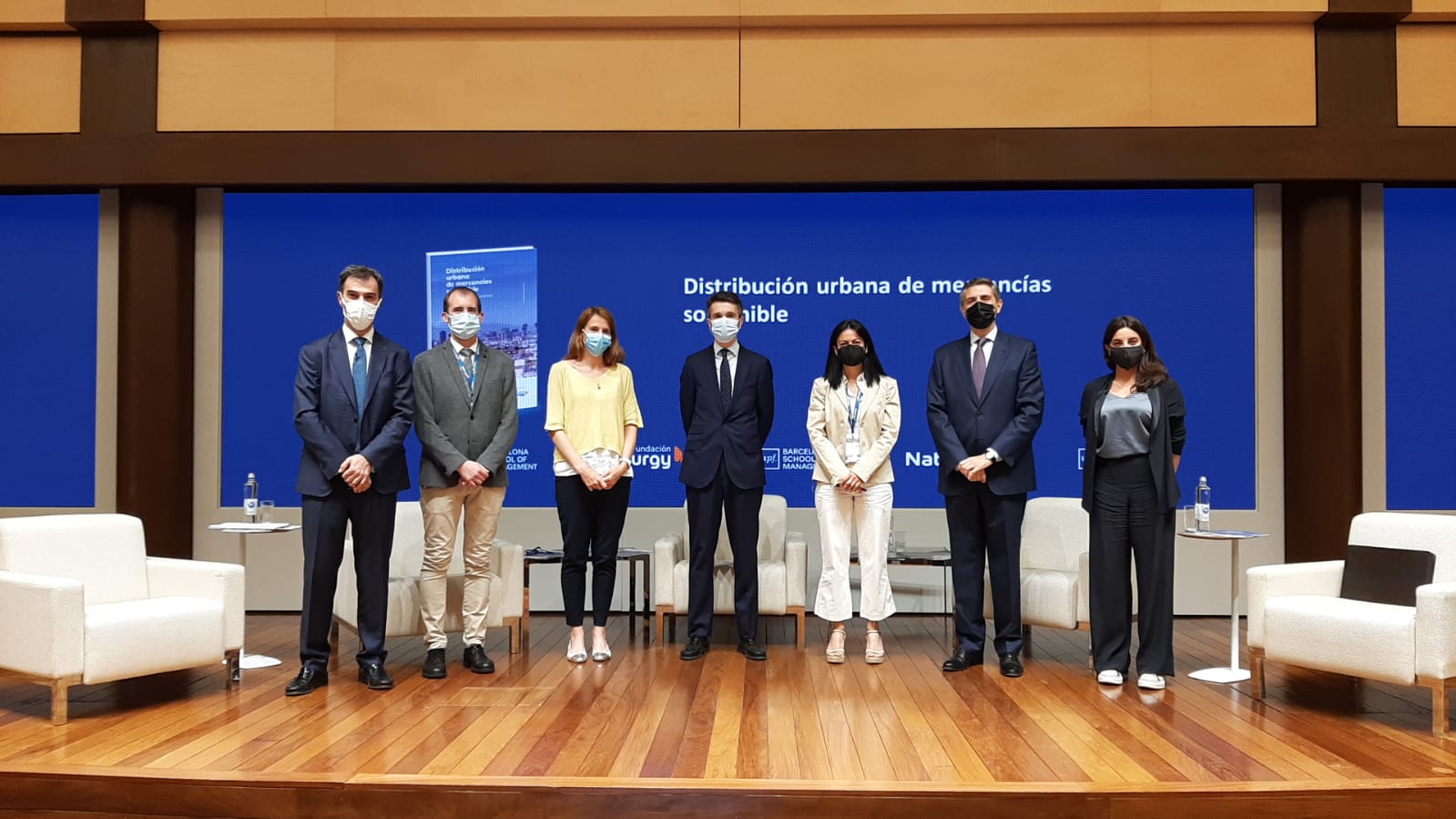Redesigning goods distribution logistics and introducing less-polluting vehicle fleets would halve costs and emissions
A study by the UPF Barcelona School of Management, published by Naturgy Foundation, finds that a sustainable urban layout requires changing how vehicles are powered and also reordering street furniture, with logistics adapting to the current needs arising from e-commerce.

Combining natural gas and electric vehicles with human-powered ones, and reorganising logistics and urban mobility to adapt to the needs of e-commerce, could reduce business costs by up to 46%, greenhouse gas emissions by 50%, and the impact on people’s health by up to 96%.
These are the conclusions of ‘Sustainable Urban Freight Distribution. Better for the Economy, the Environment, and Society’, a study written by the UPF Barcelona School of Management (UPF-BSM) and published by Naturgy Foundation, which maintains that good urban planning could improve the economic, environmental, and social sustainability of the goods transport business.
This “last-mile” transport, as it is known, has seen considerable growth recently as consumer habits and technology have changed. Online shopping has grown by double-digit numbers in the last five years, and according to the document presented today, this new business model could increase logistics costs by as much as 40%.
In addition, road freight is the cause of 25% of carbon emissions and the main producer of nitrogen oxide and particle emissions, which cause cardiovascular and respiratory diseases.
For all those reasons, “it is important to find solutions that are designed and executed to balance economic, environmental, and social sustainability, and that means tackling the logistical, technical and urban-planning dimensions of last-mile goods distribution as a whole,” explains Erola Palau, co-author of the study and Coordinator of the UPF-BSM Sustainability Observatory.
“Here public-private partnership is fundamental for sustainable freight solutions in the urban sphere, because alternative fuel vehicles require new refuelling infrastructure,” says Oriol Montanyà, co-author of the study and Director of UPF-BSM’s Department of Operations, Technology and Science. Montanyà points out that other countries, such as Italy and Germany, have invested heavily in recent years in planning and extending electric and NGV refuelling networks.
The document was based on best logistical practices in cities around the world, focusing on journeys under 50 km.
Sustainable freight is already a reality
The study was presented in a webinar which included a round table with Julie-Marie Urban, head of CSR at SEUR; Jaime Moreno García, Director General for Land Transport at the Ministry of Transport, Mobility and Urban Agenda (MITMA); Francisco Javier Bueno, from Naturgy’s Mobility project; and Ana Tristán, Service Fulfillment Operations Country Manager at IKEA. The debate was moderated by Oriol Montanyà, Director of UPF-BSM’s Department of Operations, Technology, and Science, and co-author of the study.
The MITMA representative affirmed that “cities are subject to complexity in management and transport, and the lever to improve their sustainability at this time when online shopping is increasing involves a regulatory challenge and a technical challenge for vehicles.”
Both Urban and Tristán highlighted their sustainable strategies for distribution logistics at SEUR and IKEA, respectively. “SEUR is working towards smart urban delivery. For example, in the case of urgent urban delivery, all vehicles run on CNG to compensate for immediacy, reduce failed deliveries and try to raise awareness among users encouraging them to use lockers when not at home at the time of delivery and avoid extra journeys,” according to the head of CSR at the courier company, adding that in the future they will continue to invest in vehicular natural gas and biogas as their use in transport becomes more established.
Meanwhile, Tristán explained that “we all have the duty to do something, and IKEA has set a target of 100% of deliveries with zero-emission vehicles by 2025; in Madrid, 20-30% of our transport is already sustainable.”
From the point of view of the energy sector, Bueno explained that “logistics companies have been reducing their impact for some time; at present, approximately 30% of operators’ vehicles are hybrid, 30% are electric, and 40% use vehicular natural gas.”
The head of Naturgy’s Mobility project added that “vehicles will evolve according to the needs of operators, the evolution of technology, and the availability of infrastructure. We think that last-mile delivery, in the medium term, will be via VNG with renewable gas and electric vehicles, and in the future, all electric. In the earlier miles, before urban distribution, in the medium term there will be LNG for heavy goods vehicles, and in the future, hydrogen, and to a lesser degree, electricity.”
Share